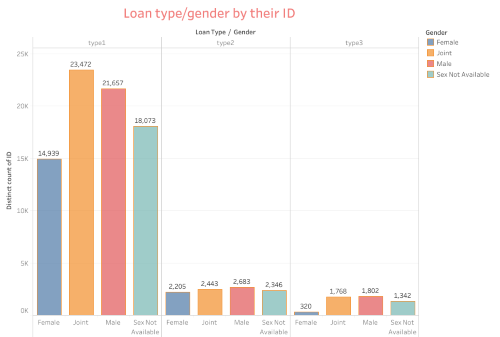Why the unusual Leafy seadragon could be the most unpopular sea animal

As their name suggests, leafy sea dragons look like they have leaves attached to their bodies. The leaf-like structure is not used for swimming, but these leaf-like appendages cover the entire body, giving themselves almost perfect camouflage in seaweed and the kelp where they live.
This unusual leafy sea dragon must be one of the most ornately decorated marine animals on our planet. The leafy sea dragon is related to the anglerfish and belongs to the family Syngnathidae together with the seahorse. It differs from the hippocampus in appearance, form of movement, and its inability to wrap or grasp things with its tail.

FEATURE
Just like the seahorse, the green-leaf seadragon gets its name from its similarity to another creature (in this case, the mythical dragon). Although not large, they are slightly larger than most seahorses, growing to about 20-24 cm (8-9.5 inches). They feed on plankton and small crustaceans.
The skin lobes that grow on this leafless sea dragon provide camouflage, making it look like seaweed. It can maintain hallucinations while swimming and seems to move in the water like a piece of floating seaweed. It can also change color to blend in, but this ability depends on the sea dragon’s diet, age, location, and stress level.
A related species is the weed sea dragon, which is multicolor and grows weed-like fin but is smaller than the leaf-shaped sea dragon. Another unique feature is the small and round gill openings covering the tufted gills, which are very different from the crescent-shaped gill openings and ridged gills of most fish.
LOCOMOTION
To move, these strange species uses two fins, a pectoral fin, and a dorsal fin, which are very thin and almost transparent. They can only move about 1/8 mile (200 meters) per hour. The leafy sea dragon uses its fins along the side of its head to make it turn. However, its outer skin is quite hard, limiting mobility. Individual leaf-shaped sea dragons have been observed to stay in one position for a long time (up to 68 hours), but sometimes move for a long time. Tracking of a person shows that it is moving at a speed of 150 meters (490 feet) per hour.
ECOLOGY
The leaf is an endemic specie in the oceans around southern Australia. It is only found from Cape Wilson in Victoria in the east to Jurien Bay 140 miles (220 kilometers) north of Perth, Western Australia. Leafy sea dragons usually live a lonely life. When the time is right, the males court the females, and then they pair to reproduce. From the moment they hatched, the green-leaf sea dragon was completely independent. By the age of two, they are usually fully grown and ready to reproduce.
This species feeds on small crustaceans such as amphipods and mydid shrimp, plankton, and larval fish through its long tubular nose
HABITAT
They inhabit temperate waters, usually between 13 and 50 feet deep (4 to 15 meters) in southern and eastern Australia. The leafy sea dragon is only found in the waters of southern Australia, from Wilson’s Cape in Victoria at the eastern end of its range, west to Yurien Bay, 220 kilometers (140 miles) north of Perth, Western Australia.[1][10] Individuals were once considered to have a very limited range; but further research found that seadragons traveled a few hundred meters from their accustomed location, using a strong sense of direction to return to the same location.
Most of them are found on sandy ground in waters up to 50 meters (160 feet) deep, surrounded by kelp-covered rocks and seaweed. They are usually seen by scuba divers near Adelaide, South Australia, especially in Fast Bay, Edisburg, and Victor Harbor.
REPRODUCTION
Like seahorses, male leafy sea dragons also care about eggs. The female produces up to 250 bright pink eggs and then deposits them on the male’s tail with her ovipositor (long tube). The eggs are then attached to the brood pieces to provide them with oxygen. After 9 weeks, the eggs begin to hatch, depending on the water conditions. During this time, the eggs turn into mature purple or orange, and then the male twitches his tail until the cubs appear.

This process takes place in 24-48 hours. The male helps the eggs hatch by wagging his tail and rubbing seaweed and rocks. Once born, the young seadragon is completely independent and eats small zooplankton until it is big enough to hunt mysids.
Only about 5% of the eggs survive.[3] Each newborn fry starts life with a small, externally attached yolk sac. This sac provides food for the first few days of their lives. Despite this initial source of nutrition, most fry instinctively learn to hunt and catch prey when they hatch, and become self-reliant before the bladders disappear.
Why is the leafy sea dragon unpopular?
The leafy sea dragon is threatened by many natural and man-made threats. They are captured by collectors and used in alternative medicine. They are fragile at birth and swim very slowly, reducing their chances of escaping predators.
Due to pollution and industrial run-off, as well as the collection of the aquarium trade, this species is on the verge of extinction. In response to these dangers, the species has been fully protected in South Australia since 1987, Victoria since at least 1995, and Western Australia since 1991. In addition, the species is included in the Australian Government’s “Environmental Protection and Biodiversity Conservation Act 1999”, which means that the welfare of the species must be regarded as part of any development project.
Due to legal protection, obtaining sea dragons is often an expensive and difficult process, because they must come from captive populations, and exporters must prove that their relatives were caught before the collection restrictions took effect, or they have a permit to collect sea dragons. According to federal fisheries legislation, and in most Australian states, sea dragons have a specific level of protection. So far, attempts to breed leafy sea dragons in captivity have been unsuccessful.









